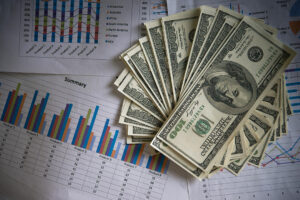(Part 2)
As discussed in the first part of this series of articles, fortune is smiling on the Philippines in this Year of the Wood Snake. Because of a boom in consumer spending (partly stimulated by the coming May elections), very low rate of unemployment; muted inflation below 3%, lower rates of interest and a depreciating peso, Philippine GDP can expand at 6.5% to 7%. The Philippines will be largely exempt from the harmful effects of the protectionist policies of the Trump Administration because of our rather low export-to-GDP ratio; our being considered a close US ally by two of the most influential economic advisers of US President Donald Trump, i.e., Secretary of State Marco Rubio and billionaire Elon Musk; and a very timely campaign of the private business sector to promote enterprise-based upskilling, reskilling, and retooling of workers which can lead to even a lower unemployment rate. With all these favorable factors, we can retain our reputation as among the three fastest growing economies in the Indo-Pacific region, together with India and Vietnam.
As I have often reiterated, however, a growth rate of 6-7% is not sufficient for us to bring our poverty incidence down to a single-digit level from its high of 16% today. We have to grow at the upper limit of the Government’s target of 6-8%. Only growth of 8% or higher will give us the resources to combat mass poverty by spending more on rural and agricultural development, urban infrastructure, and public education (at least 6% of GDP). This present Government has only three years left to build the foundations for accelerating growth towards 8% or higher.
Thus 2025 is a critical year, halfway in the Marcos Jr. Administration. It is also a year when we can convert some global threats posed by the MAGA-inspired policies of the Trump Administration into opportunities to grow our manufacturing sector and our exports. The pity is we already could be growing at close to 8% if we had been able to prevent the massive corruption going on at both the national and especially the local government level (where most of the bribes and rigged public work contracts occur).
That is why we must significantly increase our rate of investment, especially Foreign Direct Investments, if we are to attain GDP growth of 8% or more. As mentioned in the first article of this series, Japan and the US have expressed their interest in helping to develop the Luzon Economic Corridor (extending from Batangas to Manila to Clark and Subic) as an alternative site for the numerous high-value semi-conductor devices and electronic components factories that their companies have built in China. Now that President Trump has intensified the US-China trade war, this plan could be accelerated, making possible massive investments in infrastructure like railways, toll roads, power plants, and water facilities that could make the Philippines sufficiently competitive with Vietnam which has practically monopolized these relocation moves in the past.
Indeed, as reported in this paper by Justine Tabile and Aubrey Inosante, there are very concrete recommendations from leading Filipino economists to present the Philippines as an alternative destination for export-oriented firms (especially high-value chips) amid the ongoing trade war between the US and China. A 10% tariff has already been imposed by the US on imports from China. Expect other countries with considerable exports to the US like Singapore, South Korea, Thailand, and Malaysia to also suffer from tariff imposition from the Trump Administration. There will be pressure for some of their exporting firms to relocate their operations to the Philippines because there is very little probability that President Trump will include the Philippines in his protectionist policies since we have very minimal exports to the US and, as mentioned above, we are considered a very strategic partner of the US in the Asia-Pacific region.
This year, 2025, could be an important watershed in our efforts to dramatically increase the inflow of Foreign Direct Investments (FDIs). As I have mentioned many times, we should target anywhere from $15-20 billion dollars in FDIs for the rest of the Marcos Jr. Administration. This figure is what Vietnam, the most comparable ASEAN economy to the Philippines, has been able to generate in the last 10 to 15 years.
In fact, in 2024, Vietnam attracted close to $30 billion in FDIs. It is not unrealistic for the Philippines to target half of that amount if we are able to put our act together. Indonesia’s FDIs are even more impressive at $50 billion last year. Unfortunately, in 2024 our FDIs, as reported by the Bangko Sentral ng Pilipinas, totaled only $9 billion, a very disappointing performance.
Now that the global economy is undergoing another major discontinuity as a result of the MAGA policies of President Trump, with a subsequent shaking up of the world economy that favors the Philippines in a major way, we should be confident that our FDIs can experience a very dramatic jump as the major investing countries all over the world look at the Philippines as an exceptionally attractive country because of our being largely exempt from the tariff war, our young and growing population, our rich mineral resources which are indispensable to the so-called Industrial Revolution 4.0 happening in all the First World economies.
(To be continued.)
Bernardo M. Villegas has a Ph.D. in Economics from Harvard, is professor emeritus at the University of Asia and the Pacific, and a visiting professor at the IESE Business School in Barcelona, Spain. He was a member of the 1986 Constitutional Commission.
